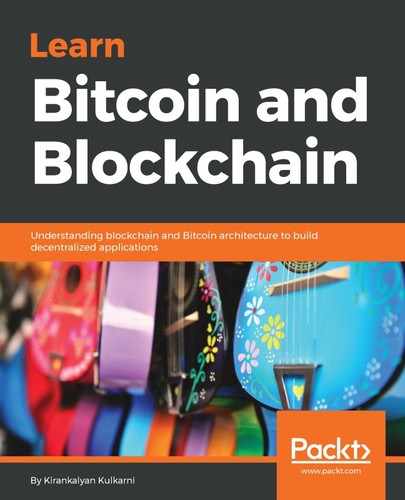In order to explain the workings of a hardware wallet, let's look at an example.
We will take as an example the Ledger Nano S wallet, which is a well-known hardware wallet. You can see the diagram or the picture of the wallet that comes with a USB extension and can be connected to laptops or computers. When the ledger device turns on for the very first time, it uses an algorithm to figure out how to use a set of 24 regular words to get a seed. They are usually words with letters, for example, four to five letters, which form one word. Basically, there are words, which will be randomly picked up, and it produces a seed. Keys for wallets are generated from the seed.
It also specifies a way to annex these 24 words with an additional passphrase, which counts as word number 25. If no passphrase is selected, an empty one is used. So, it is necessary to always have the 24 words plus one passphrase, which could be empty. Also, remember that a passphrase is different from the passwords that we use in various applications as well. A valid seed is produced when any passphrase is combined with 24 words. It is advisable that the user writes these 24 words down on a piece of paper, usually the one that comes in the box with the ledger, and keeps that paper safe and away from the ledger itself. For example, let's say you have jotted down the four or five digit PIN of your credit or debit card, and you keep the paper along with the debit card or credit card; it is highly possible that someone can get access to your card and the paper, and then get full access to your account. To ensure that this breach doesn't take place, it is advisable to keep the paper on which you have written your PIN away from the card itself.
Now, this developed seed number is used to produce a root key, which is a mix of letters and numbers that cannot be predicted. Every blockchain of cryptocurrency has its own method of producing the root key from the seed. This key is then used to develop a number of private keys that then become cryptocurrency wallets for the cryptocurrency blockchain, which the user is keen on. In addition to that, the ledger device then requires the use of a PIN, which can be a combination of four to eight digits. This is an additional measure taken to safeguard the device. However, if the PIN is wrongly logged in three times in a row on your sequence, the ledger device automatically destroys all the data, making it useless to anyone who has access to it.
If the ledger gets destroyed, stolen, or lost, the question arises about how the user can get access to the keys, the wallet, and the currency in it? The original owner of the device can then use the words on the piece of paper to restore its contents, either on a backup ledger, another ledger, or any software wallet, thus regaining all funds and addresses. This is possible because all we need to do is develop the root key, the 24 words, and the passwords, if provided when creating the words in the seed.
